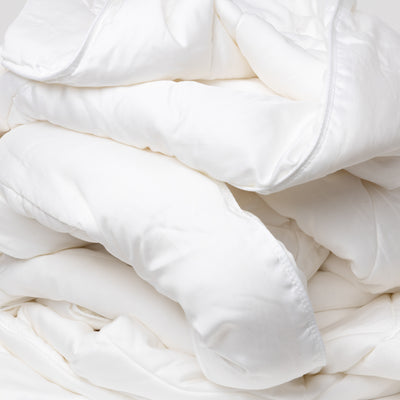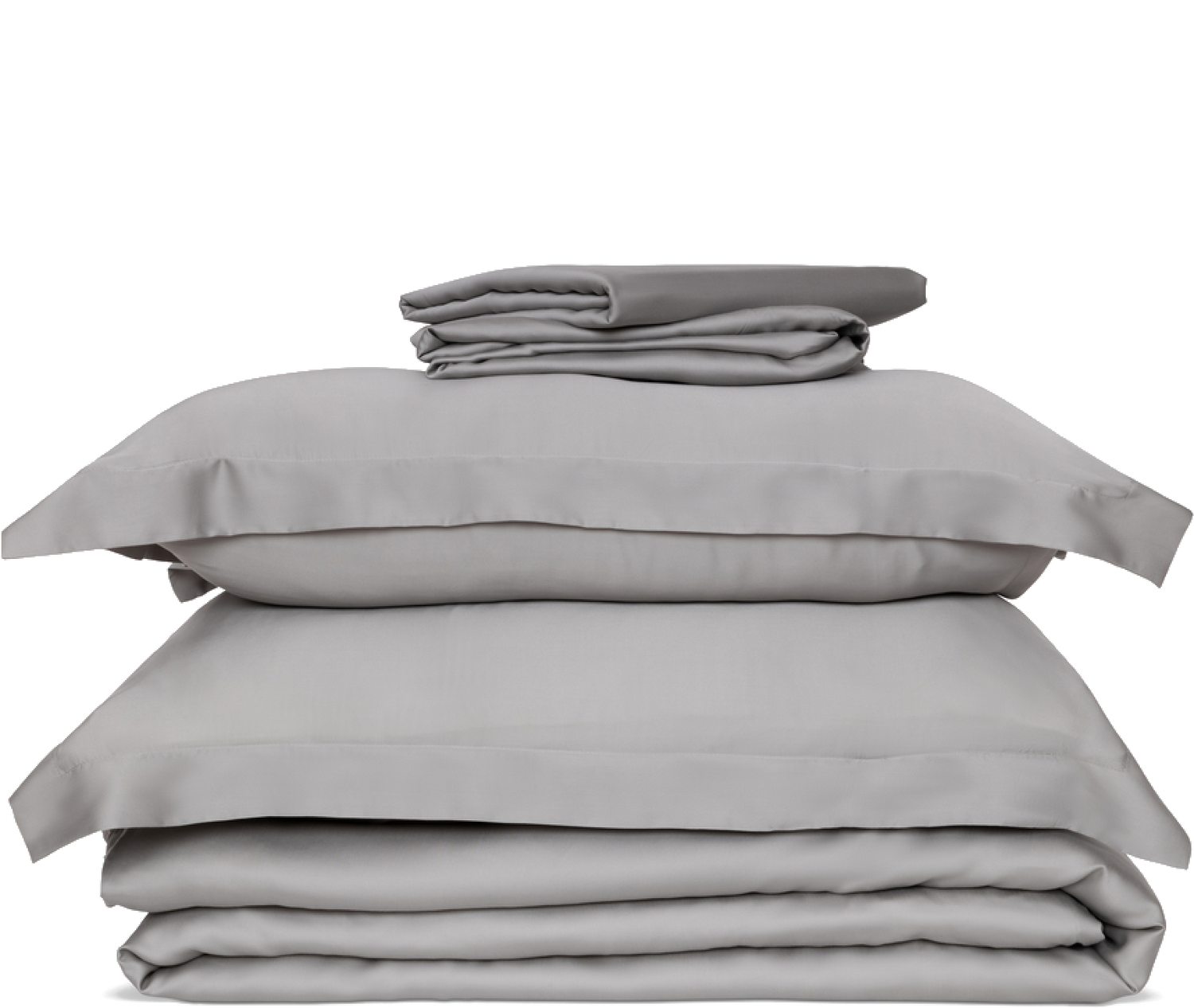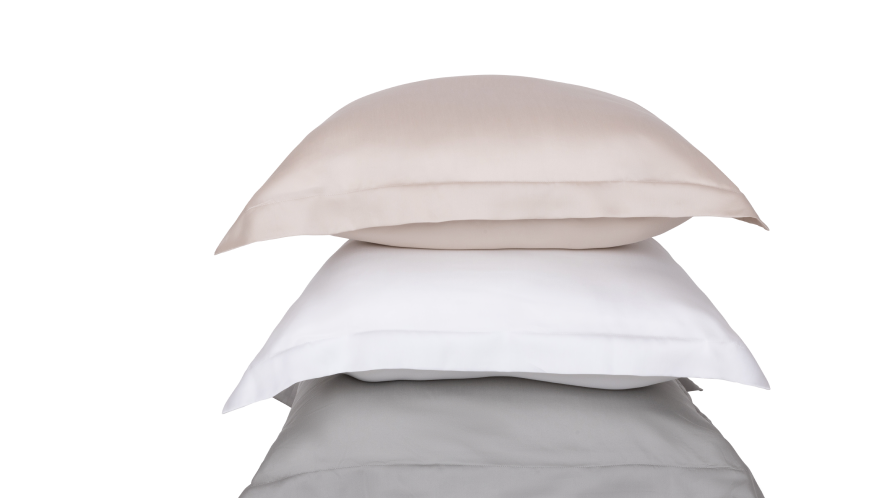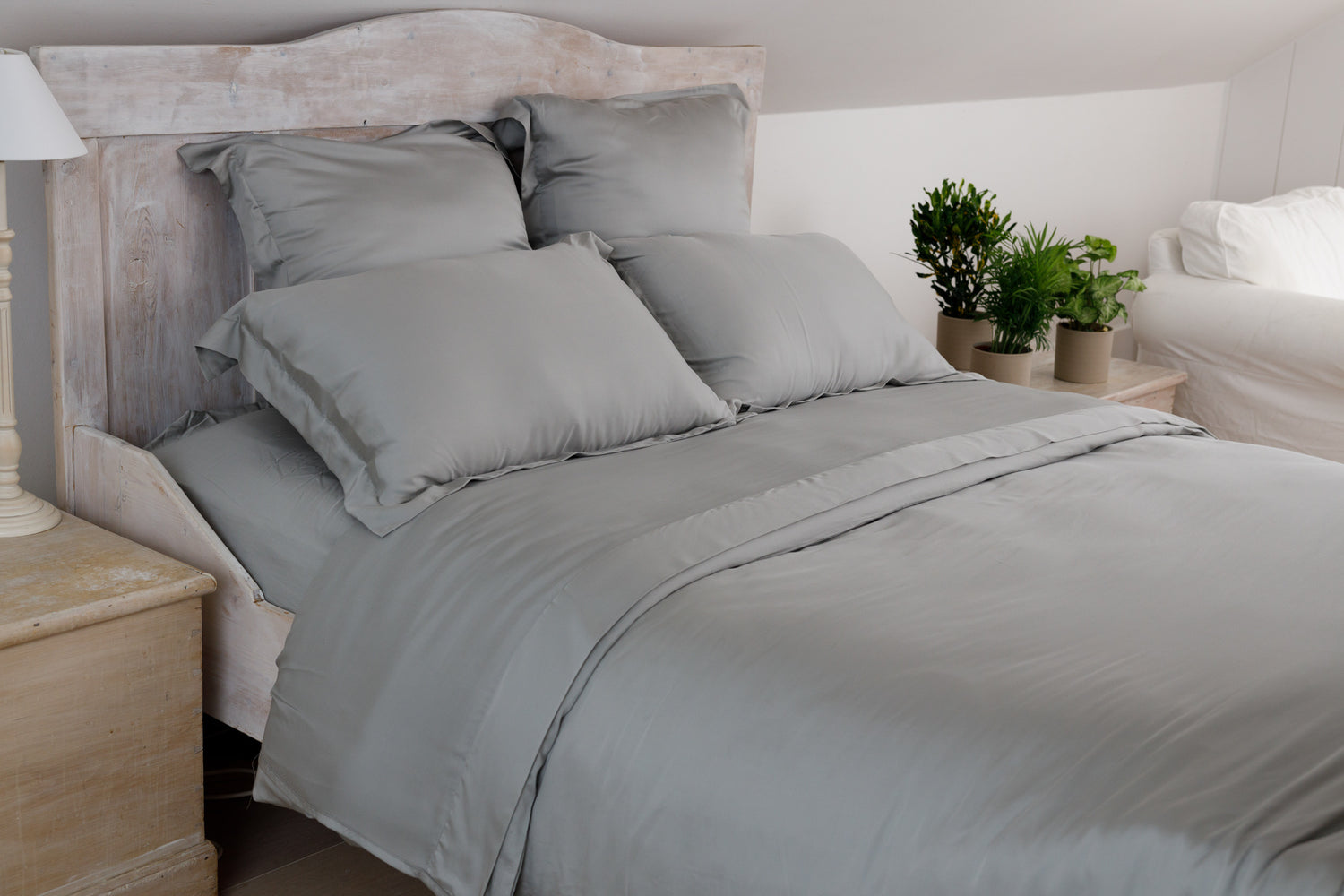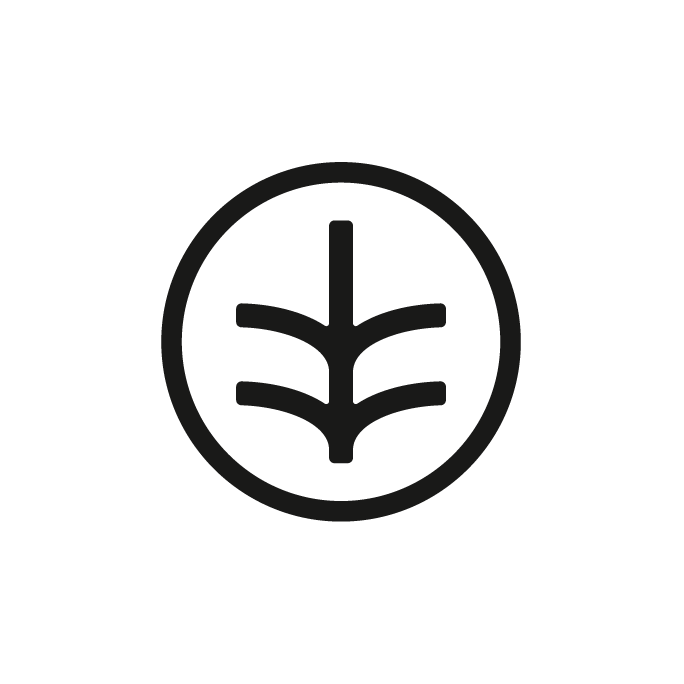We spend roughly a third of our lives in bed, so it’s important to establish your bedroom as a haven that’s both luxuriously comfortable and great-looking. But what do you need to bear in mind when dressing your bed?
In this article, we’ve explained how to dress a bed in six easy steps, explored the beautiful bedspreads, pillows, and more you need to complement your aesthetic, and outlined the best ways to choose a bedding colour scheme.
So, without further ado, read on to find out how to make a bed look nice…
A step-by-step guide: How to make a bed
Though dressing a bed can often feel like a weekly or biweekly chore, it needn’t be difficult, time-consuming, or boring. To make things easier, follow our step-by-step guide to dressing a bed:
1. Fit your mattress topper or protector
If you’re sleeping with a mattress topper or mattress protector, start by carefully fitting this over your mattress, matching the short sides to the head and tail of your bed.
2. Fit your bed sheets
Next, it’s time to fit your bed sheet, making sure the corners are neatly tucked away (this prevents them from bouncing free). For more guidance on this step, read our guide on how to fit bed sheets.
3. Shake out your duvet
Before fitting your duvet cover, give your duvet a quick shake to redistribute any lumps. If you notice any persistent bumps, focus your efforts and try to massage and shake them out.
4. Dress your duvet
Once you’ve sufficiently shaken out your duvet, it’s time to fit your duvet cover. You can either follow the traditional method or ‘California roll’ method, both of which we’ve outlined in our comprehensive duvet covers guide!
Whichever method you opt for, though, it’s important to make sure you negotiate your duvet corners tightly into the duvet cover. You can then rest your duvet over your sheet.
5. Plump your pillows
Just as you shook out your duvet, it’s important to properly plump up your pillows, to get rid of any lumps or bumpy filling.
6. Fit your pillowcases
Fill your chosen pillowcases with your plump pillows, and make sure the corners are properly filled out for a smooth and even finish. If you’re sleeping in a double bed, it’s typically recommended to position two pillows on either side, neatly placed one behind the other.

Discover Our Selection Of Pillows & Pillowcases
Add any final touches and enjoy!
If you have any additional decorative pillows, or perhaps a throw pillow, you can now lay them tidily over your freshly-made bed. Once you’re happy, enjoy a cosy and comfortable night’s sleep!
Choosing the right bedding
Before you can begin making your bed, it’s important to first-assemble the right materials and accessories. From pillows and pillowcases to choosing between flat and fitted sheets, we’ve offered our recommendations and ideas for dressing a bed!
Oxford pillowcase
An Oxford pillowcase is identified as having a wide-stitched hem around the outside, with the distinctive border giving the pillow an illusion of size.
It’s an incredibly popular choice due to its versatility and elegantly simple style – though, if you want something more decorative, you might want to consider a ‘mock Oxford’, which includes frilly embellishments!
Of course, Oxford pillowcases aren’t the only choice, and if you’re interested in learning more about choosing the right pillow style, explore our guide explaining the differences between Oxford and housewife pillows.
Square pillowcase
Unsurprisingly, square pillowcases are designed to fit square pillows – sometimes referred to as continental pillows. Typically, continental pillows are positioned to enhance a bedroom’s aesthetic and add depth to your bedding, so feel free to choose a pillowcase pattern that complements your character! Alternatively, your square pillows can be used more practically, to prop up your pillow arrangement.
The standard continental pillow comes in at 65cm x 65cm, though there are other pillow and pillowcase sizes available if you’re looking for something bigger or smaller.
Accent cushions
Just like square pillows, accent cushions – also commonly called throw pillows - are a decorative addition designed to accentuate or complement your bedroom décor. Accent cushions are available in an array of styles and finishes, so you’re sure to find the perfect pillow for your space.
Duvet cover
A high-quality duvet should last up to ten years, but only if well-treated and looked after. With this in mind, it’s important to invest in a durable duvet cover to protect your quilt from stains, marks, and damage.
Unfortunately, washing a duvet can be tricky (and sometimes costly, especially if it needs dry cleaning), whereas a duvet cover can usually be thrown in the machine on a standard cycle.
Duvet
A soft-stuffed quilt that’s designed to keep you cosy and comfortable at night, when dressing a bed you can’t overlook a duvet! The main difference between a duvet and bed comforter is that a duvet is accompanied by a removable outer casing (the duvet cover), while a comforter has an attached casing.
Bed sheet
There are two standard bed sheet types: flat sheets and fitted sheets. While a fitted sheet has elasticated corners that hug your mattress, a flat sheet (sometimes called a top sheet) simply hangs over the side of your bed and needs tucking in.
There are various advantages of each sheet type, so choosing between the two depends on your personal preference and bedroom aesthetic. If you’re interested in learning more about choosing between the two, however, we’ve written a guide outlining the things to consider when buying new bed sheets.
Throw
A throw is another decorative bed piece that can really complement your character and chosen design aesthetic. However, while most-commonly seen draped over your bed or furniture to add style, a throw is a versatile pick that can also double up as a cosy blanket.
In fact, the only major difference between a throw and blanket is the size; a throw is often smaller, and you’ll typically find traditional blankets available in a wider array of sizes.
Mattress topper and protector
Mattress toppers and mattress protectors are optional bedding extras, but each offers a series of benefits. Mattress protectors act as an additional protective layer between you and your mattress, preventing your mattress from body oils, sweat, and stains, while a mattress topper can be used to provide extra sleeping support and comfort (especially if your mattress isn’t of the highest quality!).
One thing to bear in mind when choosing a topper or protector is to get the right size – often, your mattress size (i.e., single, double, king size, etc) will suffice, but it also pays to know the dimensions.
How to pick a colour scheme for your bed
No matter what bedding accessories, textures, and fabrics you choose, it’s important to establish a colour scheme that complements your home and bedroom aesthetic.
For instance, if you’re hoping for a minimalist finish, consider neutral tones for your bulky bedding items (duvet covers, bed sheets, etc), such as whites, light greys, and creams, and inject a little colour and personality through accent or square cushions. Alternatively, if you’re after a cosy aesthetic, darks are always a fine choice!
Bed styling FAQs
In case you’re still left wondering, we’ve answered a few of the most commonly asked questions by customers looking for bed styling tips!
How many layers should a bed have?
A bed can have as many layers as you like to enjoy a cosy and comfortable night’s sleep, but the minimum will be three: a bed sheet, duvet, and pillows. Of course, it’s not uncommon to also enjoy a mattress protector or topper, blanket or throw, and dress pillows, too.
How to dress a bed with throws?
A throw blanket can be an outstanding finishing touch in any bedroom and can accentuate and complement your other pieces. However, to go one step further, why not alternate your throw depending on the season?
For instance, the depths of winter might call for a thick and cosy throw blanket, which can double up as an extra sleeping layer, while a thin, cotton layer might be more appropriate in the summer (you might even ditch the duvet and use your throw as a fine sleeping layer).
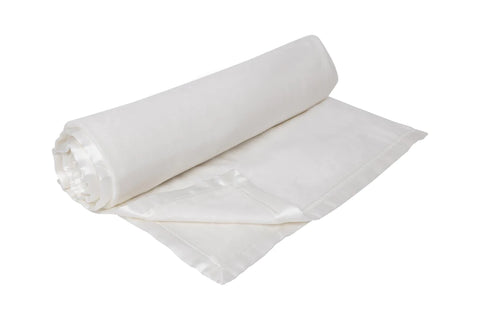
Our Eucalyptus Softy Blanket Will Keep You Cosy Even In The Coldest Of Weathers
How to dress a bed with cushions and pillows?
When dressing a bed, your bed-pillows arrangement is crucial - including the amount you use. Too many, and your bed can feel cluttered; too few, and it’ll feel empty.
Typically, when making a single bed, you’ll want to complement your large pillow with a solo square or accent cushion, while a double can take an accent cushion per pillow plus a final, decorative square cushion in the middle.
If you’re dealing with a king size bed, however, you’ll need quite a few more! In fact, once you’ve positioned your sleeping pillows, add a couple of accent cushions, followed by a large pillow and another square cushion. This might sound like a lot, but it’ll look incredible and complete your regal bedroom aesthetic.
So, there we have it – how to make a bed look nice in just a few simple steps. If you’re feeling inspired, why not check out our full selection of luxury, sustainable bedding, or discover even more insight from our experts over on the Ethical Bedding blog – including how often you should change your bedding and how to find the perfect bed set.
Any other eco-friendly home tips?
Ethical Bedding was named an expert in a Rent article. Check out the featured article here: Eco-Friendly Home Living Tips for Better Sleep and Daily Energy | Rent.

